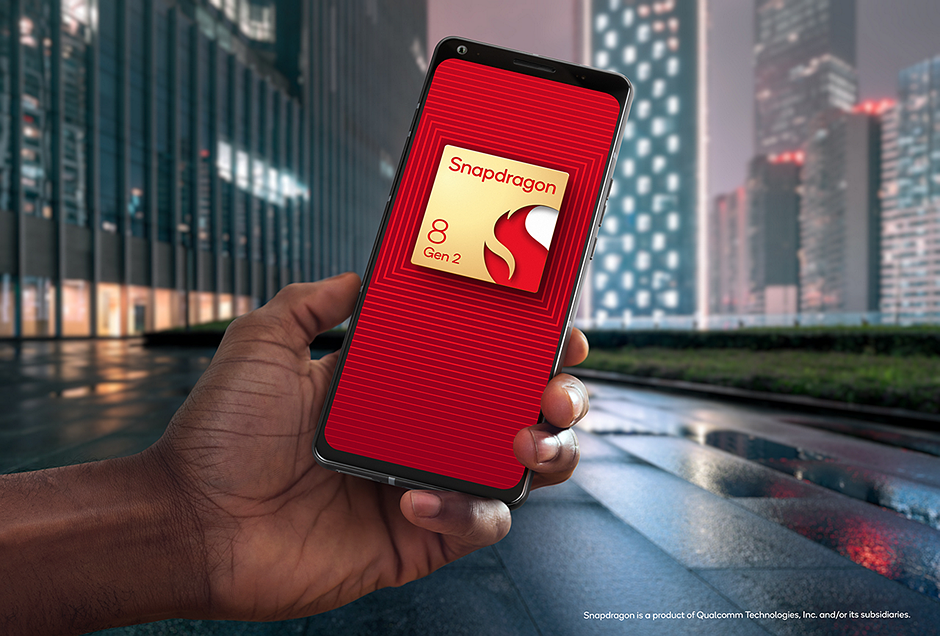
[ad_1]
 |
At its Snapdragon Summit today in Maui, Hawaii, Qualcomm Technologies Inc. announced its latest premium mobile platform, Snapdragon 8 Gen 2. In addition to new and improved performance gains, Qualcomm has added a slew of new photo-centric capabilities to its latest chipset.
Starting first with the new photo capabilities of Qualcomm’s latest chipset, the Snapdragon has a new image signal processing (ISP) technology Qualcomm is calling Cognitive ISP, which uses Direct Link technology to connect the Hexagon Processor to the Spectra ISP. This new technology will power Real-Time Semantic Segmentation, which uses AI neural networks inside the Hexagon Processor to separate out up to eight layers in a scene before individually processing each of these layers to better fine-tune the overall image quality. This allows the image processing pipeline to independently apply different levels of noise reduction, sharpening and color correction to layers of a scene, such as individual faces, facial features, hair, clothes, skies and more.
 |
In an example shared with DPReview, Qualcomm Vice President of Product Management, Judd Heape, explained how this new technology can smooth skin, sharpen hair, enrich the blues of the sky and keep detail in fabric, on a layer-by-layer level for every frame captured for still photos and video. In another example, Heape showed off how the camera can now identify a reflection in glasses and automatically remove it with no input from the user. Heape says in video mode, the Snapdragon 8 Gen 2 can handle up to eight layers, each of which has its own tuning parameters applied. All of this is done in the company’s upgraded Hexagon Processor using its new and improved AI Engine.
 |
When it announced its Snapdragon 8 Gen 1 mobile platform, Qualcomm also revealed it was entering a partnership with Sony Semiconductor Solutions to work alongside one another inside Qualcomm’s San Diego headquarters. Now, a year later, Qualcomm has shared the first fruits of its labor with Sony Semiconductor Solutions. Although the exact details of its implementation aren’t clear yet, Qualcomm says its Snapdragon 8 Gen 2 sensor will support a new Quad Exposure technology that will make the most of new Quad-Exposure Digital Overlap (QDOL) sensors from Sony, which should allow for even greater dynamic range.
 |
According to Heape, these sensors (which we presume will be in forthcoming flagship devices) will be able to output four images at different gain levels at once from a single sensor, which can then be combined to form a single HDR image. Sony Semiconductor Solutions has had sensors capable of outputting two or three gain levels at once, but this will mark the first time four simultaneous exposures can be captured and processed.
Qualcomm has also added Bokeh Engine 2, a new bokeh emulator feature that can adjust the quality, intensity and shape of the blurred out background seen in portrait mode-style images. Now, at a hardware level, the Snapdragon 8 Gen 2 can emulate different-shaped bokeh for star, heart and square out of focus highlights.
Other improvements in the photo department include improved image stabilization, ehnhanced local tone mapping, redesigned auto expoesure, better contrast-detect AF, larger phase-detection AF areas, faster noise reduction in multi-frame shots and universal sensor processing for any pixel pattern a given image sensor may have.
Qualcomm also revealed it’s working alongside Samsugn in a similar effort to get the most from its smartphone image sensors, including its Samsung’s 200MP ISOCELL HP3 image sensor. Snapdragon 8 Gen 2 is also the first Snapdragon to include an AV1 codec with support for video playback up to 8K HDR at 60 fps.
 |
Concerning gaming and overall performance, Qualcomm’s new chip debuts new Snapdragon Elite Gaming features such as real-time hardware-accelerated ray tracing, an upgraded Qualcomm Adreno GPU and Qualcomm Kryo CPU. The platform promises up to 25% GPU performance and up to 40% more CPU efficiency.
As 5G becomes more common, Qualcomm’s Snapdragon 8 Gen 2 supports the latest communications technologies, including unparalleled connectivity for 5G, Wi-Fi and Bluetooth. The Snapdragon X70 5G Modem-RF system uses the Qualcomm 5G AI Processor to use AI to deliver improved 5G upload and download speeds, coverage, latency and efficiency. It’s the first Snapdragon platform to support 5G+5G/4G Dual-SIM Dual-Active, which can simultaneously utilize two 5G SIMs. The Qualcomm FastConnect 7800 connectivity system promises low-latency Wi-Fi 7 and dual Bluetooth connectivity.
 |
Rounding out the new features is Snapdragon Sound technology. This features spatial audio with dynamic head-tracking for surround-sound immersion and 48kHz lossless audio streaming support.
The Snapdragon 8 Gen 2 Mobile Platform will be appearing in new products by the end of the year, and it should see widespread adoption within smartphones during 2023.
Qualcomm and Adobe announce expanded collaboration for creative experiences on Snapdragon
Qualcomm and Adobe have announced expanded collaboration to support creative experiences on Snapdragon-powered devices across mobile, compute and XR platforms.
Adobe Fresco and Adobe Acrobat are now native for Windows PCs powered by Snapdragon, building upon prior native support for Adobe Photoshop and Lightroom for Windows on Snapdragon devices. Adobe has also announced 3D and Immersive tools for augmented and mixed reality experiences on Snapdragon devices.
[ad_2]
Source link







